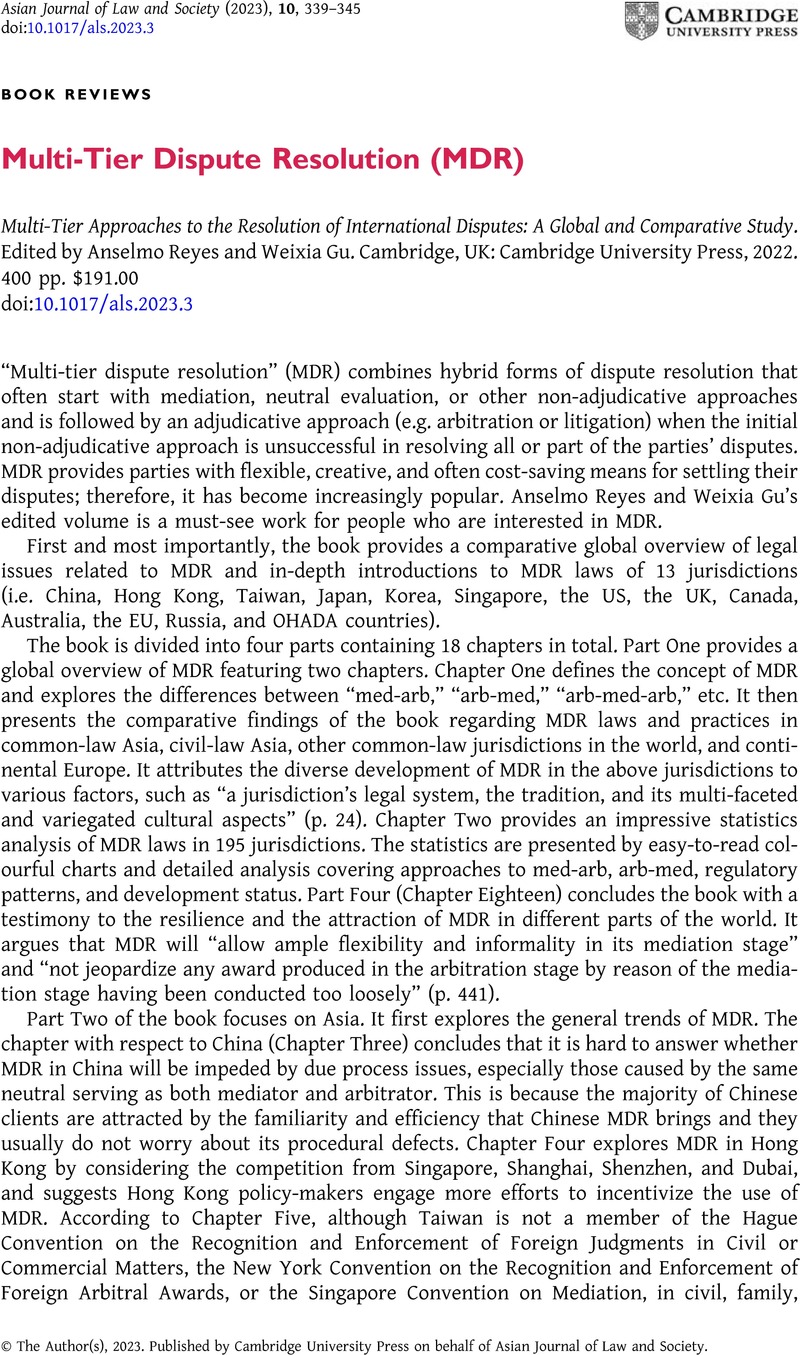No CrossRef data available.
Article contents
Multi-Tier Dispute Resolution (MDR) - Multi-Tier Approaches to the Resolution of International Disputes: A Global and Comparative Study. Edited by Anselmo Reyes and Weixia Gu. Cambridge, UK: Cambridge University Press, 2022. 400 pp. $191.00
Review products
Multi-Tier Approaches to the Resolution of International Disputes: A Global and Comparative Study. Edited by Anselmo Reyes and Weixia Gu. Cambridge, UK: Cambridge University Press, 2022. 400 pp. $191.00
Published online by Cambridge University Press: 28 March 2023
Abstract
An abstract is not available for this content so a preview has been provided. Please use the Get access link above for information on how to access this content.

- Type
- Book Review
- Information
- Copyright
- © The Author(s), 2023. Published by Cambridge University Press on behalf of Asian Journal of Law and Society


